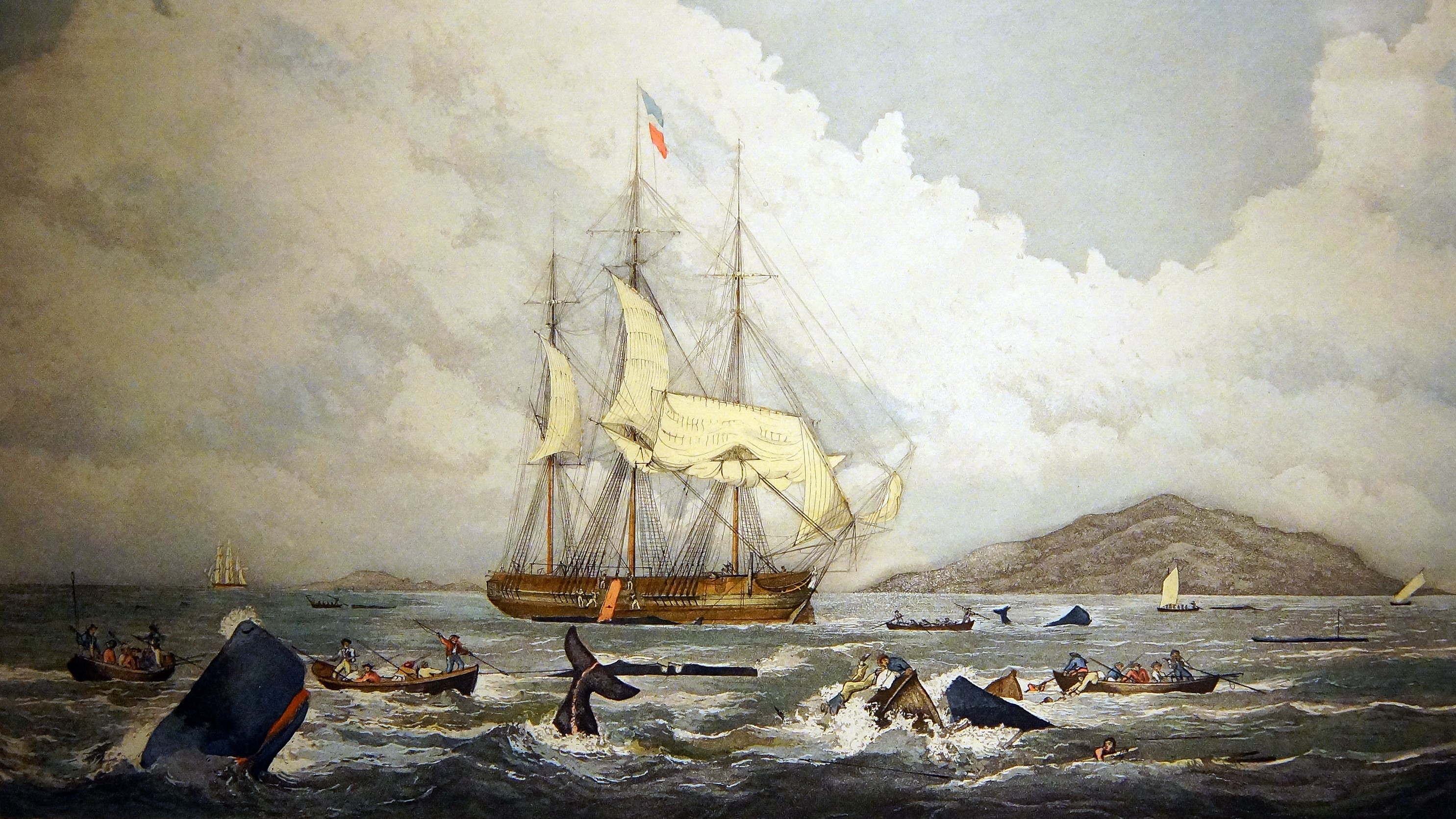Sperm whales outwitted 19th-century whalers by sharing evasive tactics
A study of the whaler's logbooks shows that the marine mammals rapidly learned new ways to avoid their harpoons.

Catching a sperm whale during the 19th century was much harder than even Moby Dick showed it to be. That's because sperm whales weren't just capable of learning the best ways to evade the whalers' ships, they could quickly share this information with other whales, too, according to a study of whale-hunting records.
By analyzing newly-digitized logbooks kept by whalers during their hunting voyages in the North Pacific, the researchers found that the strike rates of the hunters upon their targets declined by 58% in just a few years. And it wasn't because the whalers had gotten worse at landing their harpoons — the mammals had learned from their fellow whales' fatal encounters with humans, and they weren't going to repeat them, the researchers explained.
"At first, the whales reacted to the new threat of human hunters in exactly the same way as they would to the killer whale, which was their only predator at this time," study lead author Hal Whitehead, a professor of biology at Dalhousie University in Nova Scotia, told Live Science. "[The sperm whales] all gathered together on the surface, put the baby in the middle, and tried to defend by biting or slapping their tails down. But when it comes to fending off Captain Ahab that's the very worst thing they could do, they made themselves a very large target."
Related: Why was whaling so big in the 19th century?
The whales seem to have learned from their mistakes, and the ones that survived quickly adapted — instead of resorting to old tactics, the whalers wrote in their logbooks, the sperm whales instead chose new ones, swimming fast upwind away from the whalers' wind-powered vessels.
It appears these clever tactics developed by individual whales soon spread across the whale community, with whales learning successful getaway techniques from each other, the research team found. Soon, even individuals that had never been attacked before learned to follow the lead of those who had.
The whales communicated with and learned from each other rapidly, and the lessons were soon integrated into their wider culture across the region, according to the researchers' interpretation of the data.
Get the world’s most fascinating discoveries delivered straight to your inbox.

"Each whale group that you meet at sea typically comprises two or three family units, and the units quite often split off and form other groups," Whitehead said. "So, what we think happened is that one or two of the units that make up the group could have had encounters with humans before, and the ones who didn't copied closely from their pals who had."
Sperm whales are excellent intel sharers: Their highly observant, communicative nature, and the fact that each family unit only stays in larger groups for a few days at a time, means they can transmit information fast.
As studies show, that information could be news on new threats, new ways to hunt or new songs to sing.
One example of whales' extraordinary information sharing abilities involves lobtail feeding, in which a humpback whale slaps its tail hard against the water's surface, submerges to blow disorienting bubbles around its prey, and then scoops the prey up in its mouth. Researchers first observed this tactic being used by a single whale in Cape Cod, Massachusetts, in 1980, before it spread throughout the regional population in just 10 years.
Whale culture also extends far deeper than innovative ways to feed. "Sperm whales are divided into acoustic cultural climates," Whitehead said. "They split themselves into large clans, each with distinctive patterns of sonar clicks, like a dialect, and they only form groups with members of the same clan."
Different whale clans each have different ways of singing, moving, hunting and looking after their calves. These differences are profound enough to even give some clans a survival advantage during El Niño events, according to Whitehead.
Related: Photos: Orcas are chowing down on great-white-shark organs
Survival against impossible odds is a defining feature of the whales' history, and will be even more so as the threats to their existence proliferate. In the 20th century, whales, especially the 13 species belonging to the category of 'great whales' — such as blue whales, sperm whales and humpback whales — found themselves pursued by steamships and grenade harpoons that they could not escape. These whales' numbers plummeted and they soon faced extinction. Now that commercial whaling is largely illegal, many great whale populations have rebounded, but they still face the growing destabilization of their habitats brought about by industrial fishing, noise pollution and climate change.
Whitehead wants to delve deeper into the ways that different whale cultures are expressed, including the benefits that having one culture over another may help a clan survive.
"Just like humans, you could get whales with a more conservative culture or with a more innovative culture, and we're really interested in finding ways to look at these things," Whitehead said.
The researchers published their findings online on March 17 in the journal Biology Letters.
Originally published on Live Science.

Ben Turner is a U.K. based writer and editor at Live Science. He covers physics and astronomy, tech and climate change. He graduated from University College London with a degree in particle physics before training as a journalist. When he's not writing, Ben enjoys reading literature, playing the guitar and embarrassing himself with chess.


